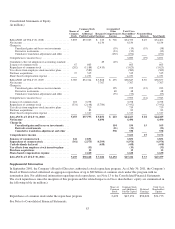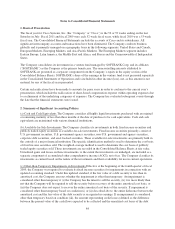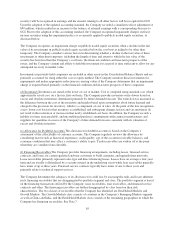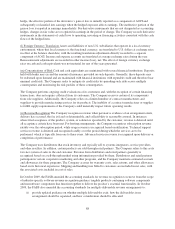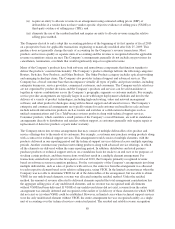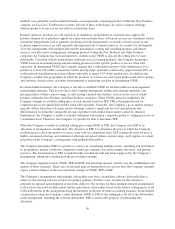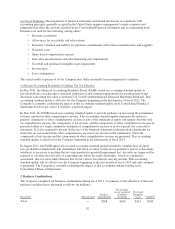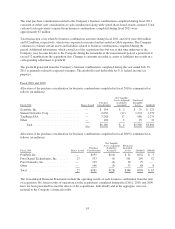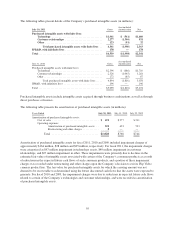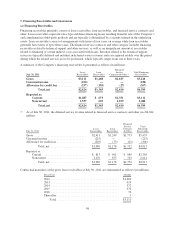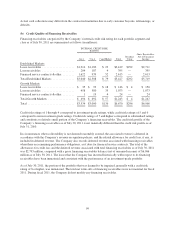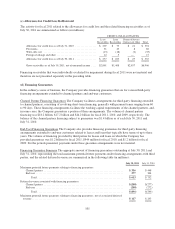Cisco 2011 Annual Report Download - page 99
Download and view the complete annual report
Please find page 99 of the 2011 Cisco annual report below. You can navigate through the pages in the report by either clicking on the pages listed below, or by using the keyword search tool below to find specific information within the annual report.
(o) Advertising Costs The Company expenses all advertising costs as incurred. Advertising costs included within
sales and marketing expenses were approximately $325 million, $290 million, and $165 million for fiscal 2011,
2010 and 2009, respectively.
(p) Share-Based Compensation Expense The Company measures and recognizes the compensation expense for
all share-based awards made to employees and directors including employee stock options and employee stock
purchases related to the Employee Stock Purchase Plan (“employee stock purchase rights”) based on estimated
fair values. The fair value of employee stock options is estimated on the date of grant using a lattice-binomial
option-pricing model (“lattice-binomial model”) and for employee stock purchase rights the Company estimates
the fair value using the Black-Scholes model. Prior to the initial declaration of a quarterly cash dividend on
March 17, 2011, the fair value of share-based awards was measured based on an expected dividend yield of 0%
as the Company did not historically pay cash dividends on its common stock. For awards granted on or
subsequent to March 17, 2011, the Company used an annualized dividend yield based on the per share dividend
declared by its Board of Directors. The value of awards that are ultimately expected to vest is recognized as
expense over the requisite service periods. Because share-based compensation expense is based on awards
ultimately expected to vest, it has been reduced for forfeitures.
(q) Software Development Costs Software development costs required to be capitalized for software sold, leased,
or otherwise marketed have not been material to date. Software development costs required to be capitalized for
internal use software have also not been material to date.
(r) Income Taxes Income tax expense is based on pretax financial accounting income. Deferred tax assets and
liabilities are recognized for the expected tax consequences of temporary differences between the tax bases of
assets and liabilities and their reported amounts. Valuation allowances are recorded to reduce deferred tax assets
to the amount that will more likely than not be realized.
The Company accounts for uncertainty in income taxes using a two-step approach to recognizing and measuring
uncertain tax positions. The first step is to evaluate the tax position for recognition by determining if the weight
of available evidence indicates that it is more likely than not that the position will be sustained on audit,
including resolution of related appeals or litigation processes, if any. The second step is to measure the tax
benefit as the largest amount that is more than 50% likely of being realized upon settlement. The Company
classifies the liability for unrecognized tax benefits as current to the extent that the Company anticipates payment
(or receipt) of cash within one year. Interest and penalties related to uncertain tax positions are recognized in the
provision for income taxes.
(s) Computation of Net Income per Share Basic net income per share is computed using the weighted-average
number of common shares outstanding during the period. Diluted net income per share is computed using the
weighted-average number of common shares and dilutive potential common shares outstanding during the
period. Diluted shares outstanding include the dilutive effect of in-the-money options, unvested restricted stock,
and restricted stock units. The dilutive effect of such equity awards is calculated based on the average share price
for each fiscal period using the treasury stock method. Under the treasury stock method, the amount the
employee must pay for exercising stock options, the amount of compensation cost for future service that the
Company has not yet recognized, and the amount of tax benefits that would be recorded in additional paid-in
capital when the award becomes deductible are collectively assumed to be used to repurchase shares.
(t) Consolidation of Variable Interest Entities The Company uses a qualitative approach in assessing the
consolidation requirement for variable interest entities. The approach focuses on identifying which enterprise has
the power to direct the activities that most significantly impact the variable interest entity’s economic
performance and which enterprise has the obligation to absorb losses or the right to receive benefits from the
variable interest entity. In the event that the Company is the primary beneficiary of a variable interest entity, the
assets, liabilities, and results of operations of the variable interest entity will be included in the Company’s
Consolidated Financial Statements.
91




